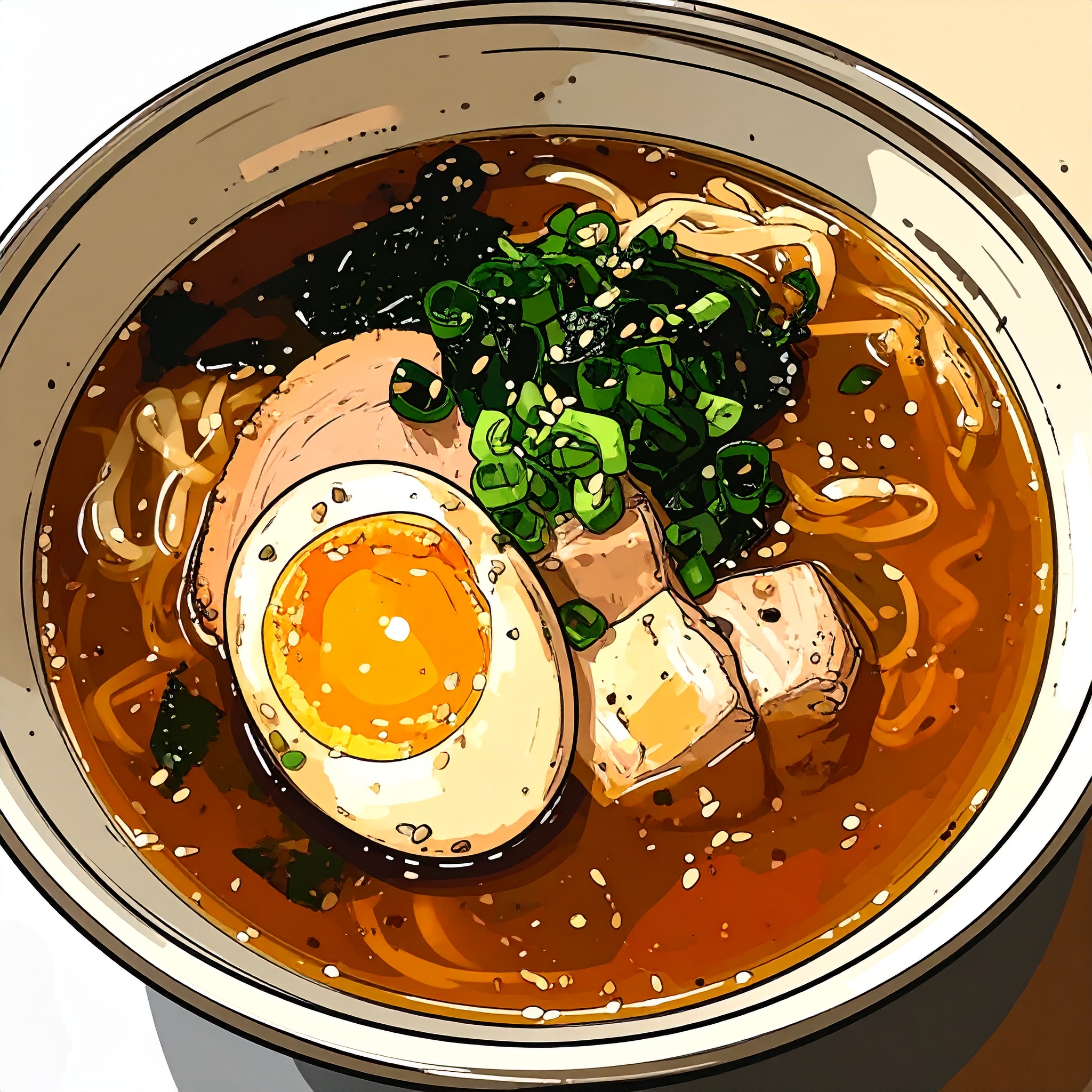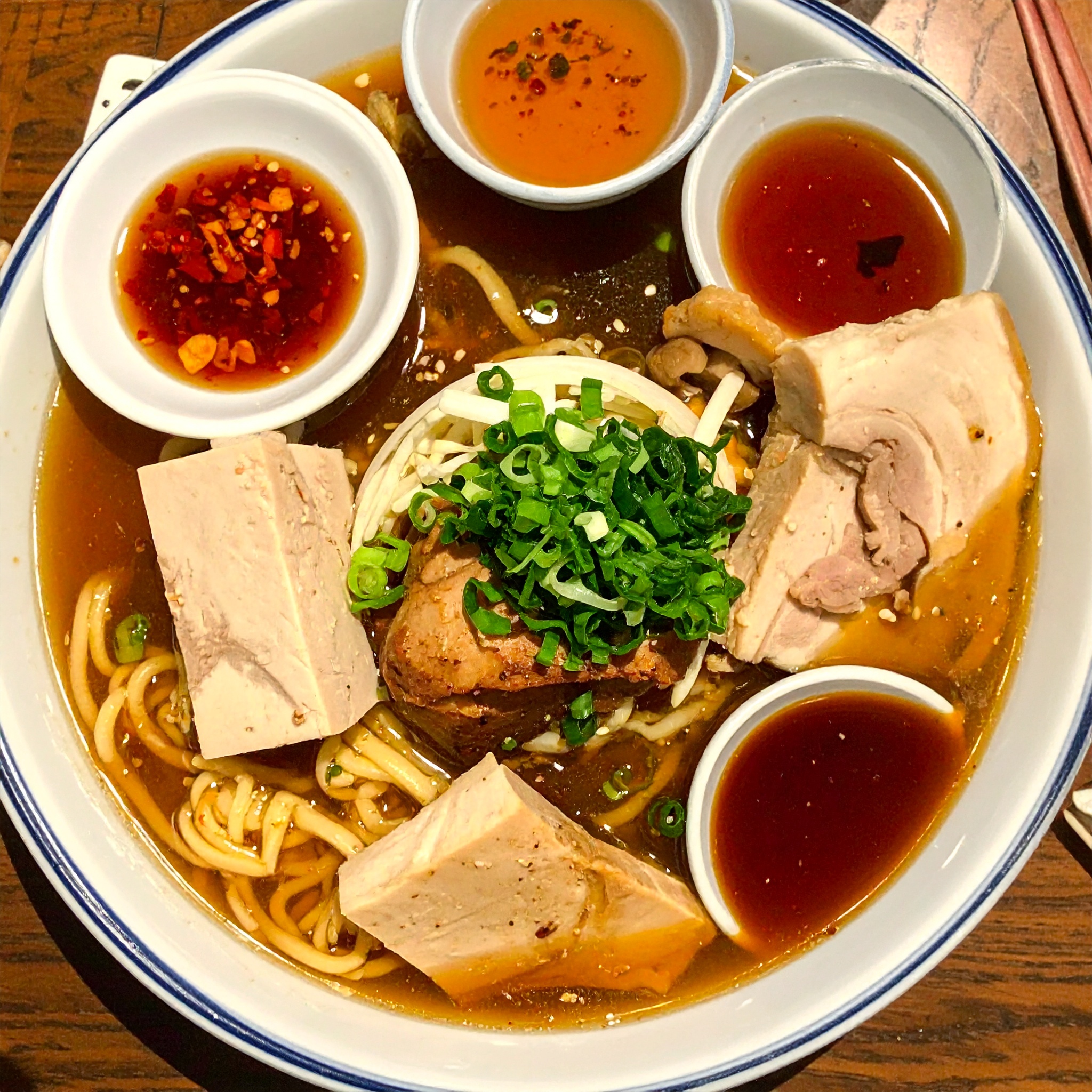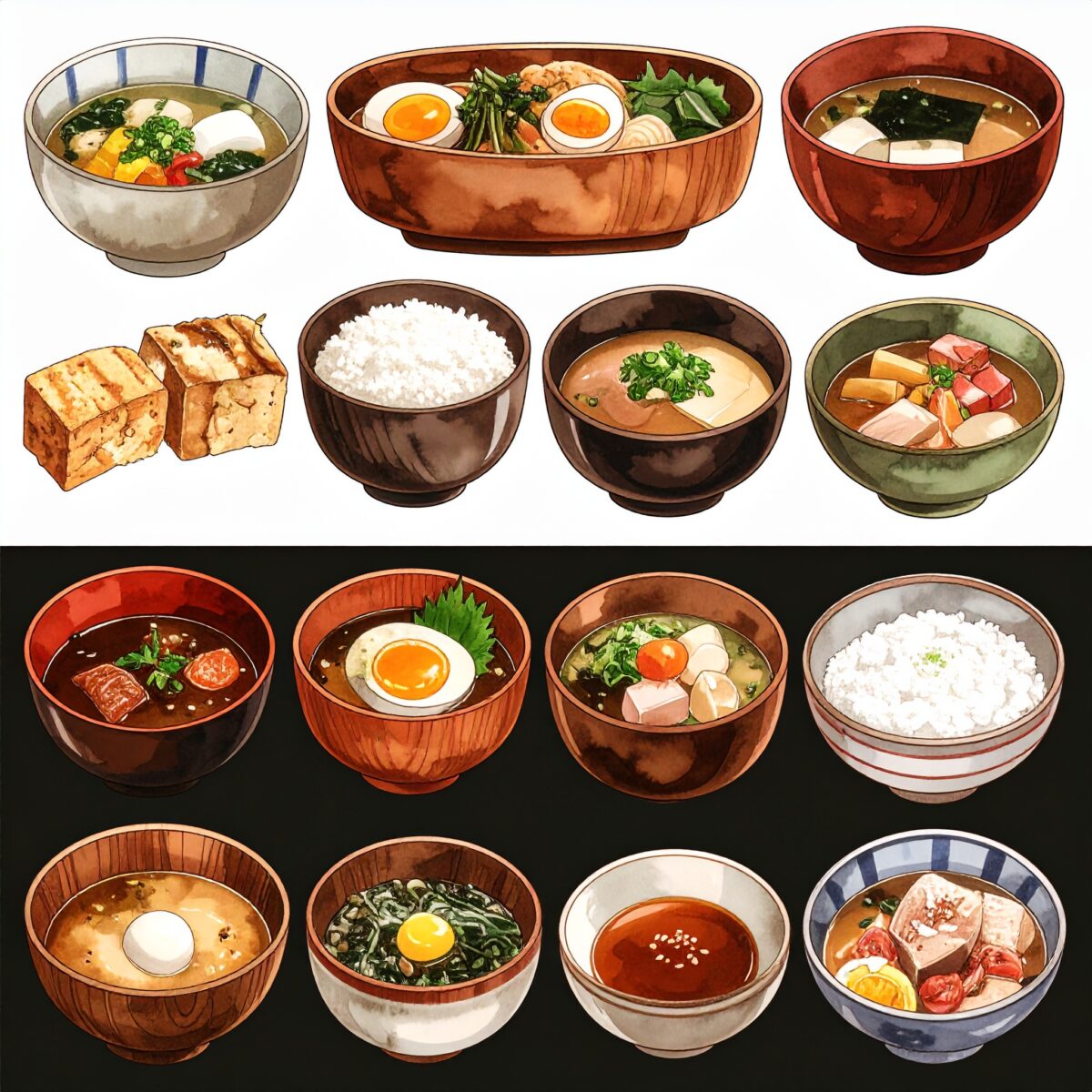While ramen is now enjoyed across Japan, each bowl tells a deeper story—one shaped by the unique climate, history, and daily life of its region.
Regional varieties such as Sapporo, Hakata, and Kitakata ramen do more than offer distinctive flavors; they serve as culinary mirrors reflecting the local culture and lifestyle in which they evolved. Let us explore the narratives behind these celebrated bowls.
Sapporo Miso Ramen — A Taste of Warmth from the Snowy North
Born from the need to combat the harsh winters of Hokkaido, Sapporo miso ramen was crafted to nourish and warm the body from within. The soup—rich and full-bodied—is a masterful blend of pork and chicken stock with both red and white miso, crowned with a layer of sizzling lard to preserve heat.
Toppings such as stir-fried vegetables, corn, and butter are not mere embellishments but rather homages to Hokkaido’s agricultural bounty. This hearty, energy-dense dish emerged as a vital source of sustenance in a region where cold defines the rhythm of life.
Hakata Tonkotsu Ramen — A Reflection of Yatai Culture and Artisan Spirit
Originating from Kyushu’s Hakata district, tonkotsu ramen is renowned for its cloudy, rich broth made by simmering pork bones over high heat, paired with ultra-thin straight noodles. One unique hallmark is the “kaedama” system—offering an extra serving of noodles for the same bowl of soup—an innovation born from the efficiency of Hakata’s vibrant yatai (street stall) culture.
Despite its deep, robust flavor, Hakata ramen maintains a surprisingly clean finish, making it an ideal choice for a light lunch or a satisfying conclusion to an evening out. The dedication of local craftsmen has elevated this once-humble fare into a global icon of Japanese culinary craftsmanship.
Kitakata Shoyu Ramen — Subtle Elegance from the Town of Pristine Waters
Nestled in Fukushima Prefecture, Kitakata is a town shaped by its abundant spring water and a rich tradition of fermentation. Kitakata ramen is distinguished by its clear soy sauce-based broth and delightfully chewy, hand-crumpled thick noodles.
This town is also known for its asa-ra (morning ramen) culture, where families and locals of all ages gather for a warm bowl to start the day. The clarity of the broth and its gentle flavor mirror the region’s tranquil lifestyle and the quiet hospitality of its people.
Flavor as a Symbol of Regional Identity
As demonstrated by the ramen of Sapporo, Hakata, and Kitakata, these bowls are far more than local specialties—they are culinary embodiments of their regions’ climate, agriculture, water, and daily life. Each bowl serves as a flavorful “introduction” to its hometown.
In recent years, “ramen tourism” has gained popularity, drawing both domestic and international visitors eager to experience the local culture through taste. Exploring regional ramen on-site has become a meaningful way to connect with Japan’s rich cultural fabric.
Summary: A Bowl of Ramen Tells the Story of a Place
Regional ramen is not merely a delicious meal; it carries within it the spirit of its people and the essence of its land. These “flavor heritages,” carefully nurtured over generations, are now recognized as powerful assets for tourism and community revitalization.
The next time you enjoy a bowl of ramen, take a moment to consider the climate, history, and lifestyle that it represents. That quiet reflection may just transform a simple meal into a deeper, more enriching experience.




